Pages That Need Review
00_1885 Scrapbook of Newspaper Clippings Vo 2, 2005.120.002
1885 Scrapbook of Newspaper Clippings Vo 2 073
54
VISITORS INSPECT CEMETERIES [?]RE [photograph of 6 men in suits and hats with nametags.]
New England Cemetery Superintende[?] Gather Officers and committee in charge of meeting here of New England Cemete[?] [?]erintendents association: Left to right, Myron H. Fisher, Brookline, president; Harry O. Mulno, Lo[?]ce president; Sidney B. Demoranville, New Bedford, member outing committee; Henry S. Adams, Bo[?] hairman, outing committee; John F. Pitman, Cambridge, and H. Wilson Rose, Newton.
Wed April 22 1931 Crash of Poles That Tied up Cambridge Traffic
MOUNT AUBURN. The cemetery of Mount Auburn, justly celebrated as the most interesting object of the kind in our country, is situated in Cambridge and Watertown, about four miles from the city of Boston. It includes upwards of one hundred acres of land, and is covered throughout most of its extent, with a vigorous growth of forest trees, many of them of large size, and comprising an unusual variety of species. This tract is beautifully undulating in its surface, containing a number of bold eminences, steep acclivities and deep, shadowy valleys. A remarkable natural ridge, with a level surface, runs through the grounds from southeast to northwest, which was for many years a favorite walk with the students of Harvard. The principal eminence, called Mount Auburn, is 125 feet above the level of Charles River, and commands from its summit one of the finest prospects which can be obtained in the environs of Boston. The grounds of the cemetery have been laid out with intersecting avenues, so as to render every part of the wood accessible. These avenues are curved and variously winding in their course, so as to be adapted to the natural inequalities of the
surface. By this arrangement, the greatest economy of the land is produced, combining at the same time the picturesque effect of landscape gardening. Over the more level portions, the avenues are made twenty feet wide, and are suitable for carriage roads. The more broken and precipitous parts are approached by footpaths, six feet in width. These passages are smoothly gravelled, and planted on both sides with flowers and ornamental shrubs. Lots of ground, containing each three hundred square feet, are set off, as family burial-places, at suitable distances on the sides of the avenues and paths. Our engraving gives a view of Central Avenue, and the fine monument there erected to the memory of Rev. F.W.P. Greenwood. Mount Auburn Cemetery owes its origin to Dr. Jacob Bigelow, of Boston, a gentleman who early became impressed with the impolicy of burials under churches, or in grave yards approximating closely to the abodes of the living. By him the plan for the rural cemetery was first conceived, and the first meeting on the subject called at his house, in November, 1825. The project met the favorable consideration of his friends, among whom may be mentioned the late Judge Story, General Dearborn, John Lowell, George Bond and William Sturgis, Esqrs., the Hon. Edward Everett, Nathan Hale, and others, men whose judgment in such matters was known to be correct, and whose influence proved to be finally effective; although it was not until the lapse of nearly five years that a suitable place was fixed upon, when Dr. Bigelow obtained from George W. Brimmer, Esq., the offer of the land then called "Sweet Auburn," for the purpose of a cemetery. It is now more than twenty years since the place was first set apart for the purpose of sepulture. The enterprise appears to have been the first of the kind in this country; and it is, perhaps, the first example in modern times, of a large tract of ground selected for its natural beauties, and submitted to the processes of landscape gardening, to prepare it for the reception of the dead. The success of the undertaking, and its acceptance with the public, have been sufficiently manifest in the large list of its proprietors and in the numerous imitations which are seen throughout the United States.
[image of two people looking at 2 large monuments with a church in the background] CENTRAL AVENUE, MOUNT AUBURN CEMETERY.
1885 Scrapbook of Newspaper Clippings Vo 2 075
56
Boston Sunday Globe April 26 1931
100 YEARS HAVE ADDED BEAUTY TO MT AUBURN — Cemetery Now Is Bower of Loveliness, Where There Is No Restriction of Birth or Residence or Creed — TO walk in Mt Auburn, Cambridge, where the yellow boughs of forsythia glisten after rain, it is hard to realize that cemeteries were not always such gardens of graceful beauty. From its ivied gates to its shaded paths, such a cemetery seems as eternal as the grave. Wild ducks have their homes on its quiet waters. Sea gulls come there to feed. Gray squirrels nest there and pheasants are shy residents.
But 100 years ago it was Simon Stone's farm and there were no such cemeteries in America. It took a pioneering spirit to conceive such a bower of loveliness for a cemetery, just as it did to create the other graces of the spirit in the golden age that Boston was entering in 1831.
This Mt Auburn, that a corps of gardeners are now preparing for the admiration of thousands of May-time visitors, began a new epoch in cemeteries. Churchyard and village burying ground all over the land took on new beauty and dignity because of the first garden cemetery that was consecrated in the grove of Sweet Auburn 100 years ago by a group of Boston's leading citizens.
Garden Lovers and Grave Sites Fittingly, Mt Auburn was begun under the proprietorship of the then infant Massachusetts Horticultural Society. That society made no mistake. The cemetery has to a great extent supported its flourishing orgranization ever since.
It was then a new and strange connection—this intimacy of garden sites. Churchyards mouldered in neglect. Dr Jacob Bigelow, distinguished physician of Boston, had been incited by "gross abuses in the rites of sepulcher" to call the attention of his friends and neighbors to the need of a new idea in burying grounds.
Till then the Stoke Pogis of Old or New World had little but mournful neglect to offer those who sought inspiration for elegies. And when Grey wrote of "The breezy call of incensebreathing morn" his swallow's twittering was not in the cemetery but ... "in the straw-built shed," which was then a more expectant haven than a burying ground for Nature's fragrances.
It remained for the neighbors of Dr Bigelow to make it possible for poets to find ... "the cool sequestered vale of life" without turning from the grave.
Mount Auburn was not created in obscurity. The community knew the significance of what it was bringing into the world. The committee that fathered the plan included Joseph Story, Supreme Court jurist, Daniel Webster, Edward Everett, Samuel Appleton, Abbott Lawrence, Charles Lowell—names that speak for themselves.
The idea was conceived not only in beauty, but in democracy that was not so closely linked with churhyard rites in the era just preceding Mt Auburn.
First Announcement In the Boston Courier of Nov 24, 1831, the committee caused to be published an announcement that "The grounds at Mt Auburn have been surveyed. It is proposed on Monday to
offer at auction the right of choice, when not only subscribers, but all who desire to become such are invited to attend and make known their selection.
"As it is believed that this cemetery is destined shortly to assume a degree of importance and to excite an interest very disproportionate to its unobtrusive commencement, the members of the Horticultural Society are desirous that their fellow citizens and neighbors who are disposed should enjoy with them all the privileges of the original subscribers. All who desire can attend the auction and secure a choice on the same grounds with themselves."
Through its century of flowering development Mt Auburn has known no restrictions of birth or residence or creed. The 50,000 who lie there have ties reaching into every part of the community and into far distant lands. The crowds who throng the careful paths with their flower offerings to remembrance in May are a cross section of those who enjoy today the institutions that were begun by the men of Dr Bigelow's generation.
Spread Over 156 Acres Perhaps the most remarkable reflection of the planning of the men
[image of the chapel surrounded by an iron fence and trees] THE CHAPEL, MT AUBURN CEMETERY, AS IT LOOKED TO THE GENERATION THAT CREATED THIS FIRST GARDEN CEMETERY IN AMERICA 100 YEARS AGO
who began Mt Auburn Cemetery is the simple statement of Judge Charles Almy, as president of the trustees in this centennial year, that there is enough land to provide for the normal sale of lots for many more years.
Much younger cemeteries have had to be enlarged or divided, or moved. But Mt Auburn has spread over 156 acres, reaching from the mount to the river, over slope and dale, through forest and meadow. One generation has followed another to its final rest. The classic monument has been followed by the simpler stone, and for the future on the new land the trustees have determined that no stone shall rise above the land to break the pleasant vista to the river. Markings and memorials, as is already increasingly the rule, will be on a level with the green carpet of the land that is thus held in its natural charm both for the repose of the dead and the solacing communion of the living.
The thread of thought that inspired this garden cemetery 100 years ago has held unbroken to the present. Judge Almy's most casual thought, as he spoke of the early blooming forsythia and pansies that already welcome strollers at Mt Auburn was that there must be more benches along the walks where mothers could stop with their children to sit and enjoy all of the attributes of a carefullycultivated park, as they do, to a greater extent than here, in the European cemeteries.
Formerly Sweet Auburn Before it was a cemetery, the site of Mt Auburn was one of the lovely
spots of the region. It was Stone's Woods, and then commonly, Sweet Auburn. The name Mt Auburn was first given it by Judge Story's committee the year of its consecration. Mt Auburn st was later named for it.
That the community fully appreciated this new conception of a burying ground is witnessed by the record that 2000 epople gathered in what has ever since been known as Consecration Dell, within the cemetery, to hear Judge Story make the address which dedicated this Sweet Auburn to its tender uses.
That consecration address of Joseph Story's has been preserved. It was clearly influenced by that beauty of the funeral oration which flowered in the Periclean period:
"We stand as it were upon the borders of two worlds." said Story. "And what spot can be more appropriate than this. All around us there breathes a solemn calm, broken only by the breeze.... The grave hath a voice of eloquence, nay of superhuman eloquence."
But he voiced also the protest of the planners of Mt Auburn for the neglected churchyards that then were a common reproach.
"Cemeteries in our cities," he said, "are walled in only to preserve them from violation, and in our country towns they are left in a sad neglected state, exposed to every sort of intrusion, with scarcely a tree to shelter their barrenness or a shrub to spread a grateful shade over the newmade hillock. These things are not worthy of Christianity in our time."
After 100 years of the inspiration of
Mt Auburn, men of civic consciousness no longer need to speak so of the care of cemeteries, urban or rural. Today a staff of 132 men maintain the 156 acres of the beauty and peace of Mt Auburn. The head gardener, Robert E. Powers, has for a full 50 years devoted a special talent to making this cemetery bloom as no bloom had ever been dreamed of in a cemetery before Mt Auburn. Th staff of Mt Auburn includes foresters and horticulturists, a landscape architect under regular retainer, engineering and construction staffs. The purchase price of a lot today, whether it is at the minimum of $350 for a four-grave lot or as high as $2000, includes its care.
Many of Boston's Great [Thero?] Among those buried there are many of the great names of Boston's last 100 years: Longfellow, Lowell, Sumner, Parkman, Holmes, Everett, Channing, Brooks, Choate, Agassiz, Margaret Fuller and Charlotte Cushman.
In the 99th annual report of the cemetery Judge Almy gives these facts of its history:
"Mt Auburn was the first rural or garden cemetery in this country.
"Several sites were considered, among them being the Aspinwall estate in Brookline, and land on Western av near the 'Punch Bowl.' Finally about 1830 a tract in Cambridge and Watertown, then called 'Stone's Woods' or frequently 'Sweet Auburn,' was selected. This consisted of about 72 acres and was then owned by George W. Brimmer, who agreed to sell it for the sum of $6000, which was its cost to him.
"It was thought wise that the land should be held by an existing corporation, and it was conveyed to the Massachusetts Horticultural Society, which was incorporated in 1829, and which, in 1831, was given power to bury the bodies of the dead. The land was laid out in lots, avenues and paths, by Alexander Wadsworth.
"The right of choice of lots was sold at auction, and Mr Samuel Appleton paid $100 for the first choice. The original price of a lot of 300 square feet was $60.
"The first interment was that of a child of James Boyd on Mountain av on July 6, 1832. The first monument was put up in September, 1832, for Miss Hannah Adams.
"In 1835 the present corporation was created by special act under which the Historical Society conveyed to the new corporation its land, and was to receive one-quarter of the amount received for sale of lots. The first president of the new corporation was Judge Joseph Story the first secretary was Judge Benjamin R. Curtis, the first treasurer was George Bond, and the first superintendent was John W. Russell. The salary of the superintendent was $600, and he was required to board in his family the laborers in the cemetery for $2.50 a week each. The treasurer was paid by a commission of 2 1/2 percent on the sale of lots.
The gateway was built in 1832 of wood, painted to resemble granite. in 1842 it was replaced by the present granite gateway of the same design.
"The old chapel (now the crematory) was built in 1844. In 1853 it was taken down and rebuilt.
"The tower, 62 feet in height, was built in 1852, and in the words of Dr Bigelow, "is a center to which mourning heads and eyes are daily turned of those who would fain seek in its shadow for what remains on earth of their children and kindred."
Seven Men Have Been Presidents For 30 years rites at Mt Auburn have included cremation as well as burial. The proportion of cremations has grown, until last year the number almost equaled the number of burials. A consequence is that
smaller lots suffice for a great proportion of interments than were formerly required and often the urn is taken from Mt Auburn for private disposition to the ashes.
Mt Auburn has always drawn its trustees from among the most distinguished names in the community. They have given long service. Just seven men have been presidents of the trustees, from Joseph Storey to Charles Almy. As superintendent, John F. Peterson has had only eight predecessors. Prentice W Abbott has been secretary and treasurer since 1912 and Judge Almy has been president since 1918.
1885 Scrapbook of Newspaper Clippings Vo 2 077
58
The Modern Trend in an Old Cemetery
[image of trees next to a lake] Mount Auburn Development Resembles Park Rather Than Graveyard
OLD New England cemeteries, still ready to receive the dead after years that have seen them steadily filling with rows of tombstones and monuments, are facing a revolutionary transformation. For the mode in graveyards is changing today just as surely, if not so rapidly, as in countless other ways of life—and death, and burial grounds are yielding to the modern trend toward natural beauty.
It may be sad news to the marble and granite cutter and to the dealer in monumental wares, but no imposing headstones or similar sepulchers will be reared against the landscape to mark the graves in the model necropolis of the future. Instead, all markers will be embedded in and level with the surface of the surrounding ground, in conformity with the growing conviction among cemetery authorities that crowded stones and slabs of mournful aspect and of many shapes and sizes are less pleasing and restful to the eye than is a vista of trees, shrubs, flowers and water.
Mount Auburn Cemetery in Cambridge, burial place of many famous men and women, and one of the oldest and largest cemeteries in the country, is among the first in this vicinity to recognize and to promote the tendency to accentuate natural beauty rather than artificial ornamentation for the resting places of the dead. Although it contains many mausoleums and memorials of real artistic merit, including the impressive tomb
of Mary Baker Eddy, founder of Christian Science. The proprietors have long been vigilant to guard the natural beauty of the grounds and some time ago imposed restrictions providing that no lot should have more than one monument, headstone or other memorial above the grade of the lot and that designs of all structures to be erected in the grounds should be submitted to the superintend ent for approval. Now, with a view to making the cemetery even more sightly, they have set aside a portion of a new tract on which no memorials may be placed above the ground. — New Tract Developed In the southwest part of the cemetery, a new tract of twenty-five acres, bordering on Coolidge avenue and Grove street, is being developed to resemble a park rather than a graveyard, in accordance with plans drawn by Laurence S. Caldwell, Boston landscape architect. The gently sloping terrain has been carefully graded and seeded and planted with mountain laurel, rhododendrons and other shrubs and flowers to supplement the stately elms and massive willows that have stood there for years. On the shores of Willow Pond, a small but beautiful body of water in the midst of a clump of willows on the tract, are the lots on which no monuments may be raised. The trustees already have expended $100,000 in the development and
they plan to extend the area as the demand for the new lots warrants.
The project was first suggested two years ago by Judge Charles Almy president of the trustees, in keeping with the progress being made by cemeteries in other parts of the country, especially in the West, but the proposal did not meet with the favor of a majority of the trustees. Judge Almy was not discouraged, however, and submitted the same proposal at the next year's meeting of the trustees, with the result that it was adopted.
"It will be very interesting to see how far and how fast this modern trend extends," says Judge Almy. "There can be no question as to the greater beauty of such final resting places. It is a question of how fast the public can get over the idea that a graveyard is a place to be filled up with marble or granite or slate stones and realize that trees and grass and flowers are more suitable as well as more beautiful.
"There is nothing terrible about death. It is a simple and often a beautiful thing and should not be treated as something to be spoken of with hushed voices, and the resting places of those who are gone should be cheerful and attractive. Much has been done to lessen the dreadful gloom of funerals and mourning apparel, and the modern cemetery may, and perhaps should, be cheerful as well as beautiful, and a place to be visited, not in a spirit of gloom and sorrow, but as one in
which we can take pleasure in remembering those who have gone before. — Typical Lot of Old "Not many years ago the typical lot had on it a central monument, on which was the family name of the owner and such other inscriptions as individual taste called for. The monument was sometimes simple and dignified, and often ornate, having symbolic figures or caps, such as an angel contemplating flight, as interpreted by a mortuary artisan. Some of these were pretty bad. There was also a headstone and footstone on each grave, and on the headstone an inscription giving the name and dates, with some recital of the virtues of the deceased, either in prose or verse, or also very commonly, a single word, such as 'Mother,' 'Father' or 'Baby,' which was sufficient for the family but not informatory to others. As the lot filled up, it, with others near it similarly treated, looked like the yard of a granite or marble cutter.
"Marble, perishable stone, was the material most commonly used, with more or less ornamental carving, according to the taste of the owner, or possibly that of the one who sold the stone or did the work. Some of the stones were simple and some inclined to be ostentatious. On other lots were large and conspicuous tombs. In earlier days the inscriptions were a fertile field for genealogists and antiquarians, but now such information is better had from municipal records.
"Formerly, the attitude of cemeteries was that when a lot was sold, the buyer could put on it such memorials as he pleased, irrespective of the effect on the appearance of the cemetery as a whole, but for some time a right of censorship usually has been reserved, which has been exercised very gently. It is rather difficult to restrain a not unnatural desire of mourners to display their grief.
"With the gradual passing of crepe and opther accompaniments of 'full mourning' and 'simplification of funerals, a change has come over cemeteries, and many of them are trying to become more beautiful and natural. Many of them are restricting the number of memorials which can be placed on a lot above the grade of the lot. A good many new cemeteries in the West and a considerable number in the East allow nothing above grade, and it is worth noting that two at least of our leading and old cemeteries. Mount Auburn and Forest Hills, have set apart tracts of very attractive lots on which nothing can be placed above grade, which indicates the belief of the trustees that here is a demand for such areas from people of educated taste.
"This interesting change in the treatment and development of cemeteries is rapidly increasing. The old system of burying under churches, or in crowded burial places in cities, and in church yards or town cemeteries in rural districts, gave way long ago to garden cemeteries, sometimes private and sometimes publicly owned, in which a serious effort was made to have them beautiful as well as restful. The first cemetery of this kind was started just 100 years ago and has been followed by many others in all parts of the country. — Early Customs "The custom of early days permitted and almost required that a monument or headstone should be placed at each grave, on which should be placed an inscription setting out the virtues of the deceased and very often some lines of verse or scriptural quotation, giving point to the story of the child who asked where the bad people were buried, because he had read the headstones, and only good people were in the cemetery. It was thought that the owner of a lot had a right to put up whatever memorial he saw fit on his lot, with the result that cemeteries filled up with monuments, headstones and tombs standing high in the air, some of which were simple and beautiful and many were very ornate and ostentatious.
"The typical lot had a granite curb, an iron fence around it, a central monument bearing the family name and at each grave a headstone with the name and virtues of its occupant, or often merely 'Father,' 'Mother,' or 'Baby,' and also another stone at the foot of the grave. Many lots were almost entirely covered with such stones and looked like the yard of a granite cutter.
"A good many years ago the best of the cemeteries refused to allow more granite curbs or iron fences and are trying now to get rid of those that exist. Most of them exercise a more or less strict censorship over memorials placed
on lots, and this censorship combined with a general improvement of public taste has had a good effect, but the desire of a few for ostentation in the marking of the graves of their dead cannot be entirely controlled.
"In older days graveyards were searched by genealogists and antiquarians for information which can now be had more easily by going to the official records, which are constantly growing more dull and accurate. The historical value of dates and inscriptions on monuments and headstones has nearly disappeared.
"There is no question as to the beauty gained by the abolition or limitation of headstones above the ground, and the action of Mount Auburn and Forest Hills in doing away with them entirely in some of the most attractive parts of those cemeteries indicates strong belief on the part of their trustees that such a restriction will appeal to people of taste. It is a strictly modern and very interesting tendency and one which is likely to add greatly to the attractiveness of our cemeteries."
1885 Scrapbook of Newspaper Clippings Vo 2 078
59
THE UNIVERSALIST AND LADIES' REPOSITORY 109 — CEMETERY OF MOUNT AUBURN.
1834
[illustration of Mount Auburn's entrance with the Egyptian style gate. It is flanked by an iron fence on both sides. There are people walking around and man on horseback.]
Entrance to Mount Auburn.
THE Cemetery at Mount Auburn, justly celebrated as the most interesting object of the kind in our country, is situated in Cambridge and Watertown, about four miles from the city of Boston. It includes upwards of one hundred acres of land, purchased at different times by the Massachusetts Horticultural Society, extending from the main road nearly to the bank of Charles river. A portion of the land next to the road, and now under cultivation, constitutes the Experimental Garden of the Society. A long water-course between this tract and the interior woodland, forms a natural boundary, separating the two sections. The inner portion, which is set apart for the purposes of a Cemetery, is covered, throughout most of its extent, with a vigorons growth of forest trees, many of them large size, and comprising an unusual variety of kinds. This tract is beautifully undulating in its surface, containing a number of bold eminences, steep acclivities, and deep, shadowy valleys. A remarkable natural ridge, with a level surface, runs through the ground from south-east to north-east, and has, for many years, been known as a secluded and favorite walk. The principal eminence, called Mount Auburn, in the plan, which has been published, is one hundred and twenty-five feet above the level of Charles river, and commands from its summit, one of the finest prospects which can be obtained in the environs of Boston. On one side is the city in full view, connected at its extremeties with Charlestown and Roxbury. The serpentine course of Charles river, with the cultivated hills and fields rising beyond it, and the blue hills of Milton in the distance, occupies another portion of the landscape. The village of Cambridge, with the venerable edifices of Harvard University, are situated about a mile to the eastward. On the north, at a very small distance, Fresh Pond appears a fine sheet of water, finely diversified by its woody and irregular shores. Country seats and cottages in various directions, and especially those on the elevated land in Watertown, add much to the picturesque effect of the scene. It is proposed, at some future period, to erect on the summit of
Mount Auburn, a tower, after some classic model, of sufficient height to rise above the tops of the surrounding trees. This will serve the double purpose of a land-mark, to identify the spot from a distance, and of an observatory, commanding an uninterrupted view of the country around it. From the foot of this monument will be seen, in detail, the features of the landscape, as they are successively presented through the different vistas which have been opened among the trees, while from its summit a magnificent and unbroken panorama, embracing one of the most delightful tracts in New England, will be spread out beneath the eye. Not only the contiguous country, but the harbor and the bay of Boston, with their ships and islands, and, in a clear atmosphere, the distant mountains of Wachusett, and probably, even of Monadnock, will be comprehended within the range of vision.
The grounds of the Cemetery have been laid out with intersecting avenues, so as to render every part of the wood accessible. These avenues are curved and variously winding in their course, so as to be adapted to the natural inequalities of the surface. By this arrangement, the greatest economy of the land is produced, combining, at the same time, the picturesque effect of landscape gardening. Over the more level portions, the avenues are made twenty feet wide, and are suitable for carriage roads. The more broken and precipitous parts are approached by footpaths, six feet in width. These passage-ways are smoothly gravelled, and will be planted on both sides with flowers and ornamental shrubs. Lots of ground, each containing three hundred square feet, are set off, as family burial-places, at suitable distances on the sides of the avenues and paths. The perpetual right of inclosing and of using these lots, as places of sepulture, is conveyed to the purchasers of them, by the Horticultural Society.
The principal entrance to Mount Auburn, is through a lofty Egyptian gateway, erected on the main road, at the commencement of the Central Avenue. It has two lodges at its sides, and bears the following inscription:
'THEN SHALL THE DUST RETURN TO THE EARTH, AS IT WAS; AND THE SPIRIT SHALL RETURN UNTO GOD, WHO GAVE IT.'
Within the Cemetery about forty sepulchral monuments of different kinds have been erected, mostly by individual proprietors, all of which evince a pure and classical taste. Some of these are elaborate, and highly ornamented. The monument erected over the remains of Spurzheim, the Phrenologist, is of pure Italian marble, and is made after the model of Scipio's tomb, at Rome.
We cannot more appropriately occupy a few columns of our paper, than by introducing an extract from the address of Judge Story, delivered on the dedication of the Cemetery—a performance peculiarly eloquent, chaste, and classic.
'A rural Cemetery seems to combine, in itself, all the advantages, which can be proposed to gratify human feelings, or tranquilize human fears; to secure the best religious influences, and to cherish all those associations, which cast a cheerful light over the darkness of the grave.
And what spot acan be more appropriate than this, for such a purpose! Nature seems to point it out with significant energy, as the favorite retirement for the dead. There are around us all the varied features of her beauty and grandeur—the forest-crowned height; the abrupt acclivity; the sheltered valley; the deep glen; the grassy glade, and the silent grove. Here are the lofty oak, the beech, that 'wreathes its old fantastic roots so high,' the rustling pine, and the dropping willow; the tree, that sheds its pale leaves with every autumn, a fit emblem of our own transitory bloom; and the evergreen, with its perrennial shoots, instructing us, that the 'wintry blast of death kills not the buds of virtue.' Here is the thick shrubbery, to protect and conceal the new-made grave; and there is the wild-flower creeping along the narrow path, and planting its seeds in the upturned earth. All around us there breathes a solemn calm, as if we were in the bosom of a wilderness, broken only by the breeze, as it murmurs through
1885 Scrapbook of Newspaper Clippings Vo 2 079
60
BOSTON HERALD, THURSDAY, NOVEMBER 26, 1936
FANCY THIS -By Jack Frost
[illustration of a tomb surrounded by an iron fence and trees. Signed Jack Frost dated 1936]
The tomb shown in the sketch is the memorial in Mt. Auburn Cemetery to John Thornton Kirkland, fifteenth president of Harvard, remembered as one of the great leaders of the university. It will be noted that the fence surrounding the vault has fallen into disrepair.
The Kirkland administration, from 1810 to 1828, has been called "the Augustan Age of Harvard," when the influence of the college began to be felt much more widely throughout the nation. New departments of instruction were
opened, two new professional schools added, and three new buildings were erected. Students began to enter the college from outside New England in larger numbers.
President Kirkland was born in Herkimer, N. Y., in 1770, the son of Samuel Kirkland, a celebrated Indian missionary who influenced the Oneida Indians to join the patriot's cause in the Revolution. He died in Boston in 1840, 12 years after his retirement as president of Harvard because of ill health.
60c
MOUNT AUBURN CEMETERY One of America's Finest Burial Grounds
We are indeed pleased to bring to the attention of our readers in this Review, Mount Auburn Cemetery, one of the most outstandingly beautiful burial grounds in the entire country.
It can be truly said that the progress of civilization in any community may be judged by the advancement that has been made in the care and respect for the memory of those who have passed to the great beyond. We deem it eminently fitting and proper, therefore, that we direct the attention of our readers to this burial ground in Cambridge, of which this entire section of the state may feel proud and which reflects in simplicity and beauty is eloquent of silent tribute to those who rest beneath its protecting elms.
Situated between the Charles River and the Cambridge-Watertown highway, Mount Auburn has the advantage of accessibility from Metropolitan Boston. Comprising 160 acres of consecrated land, beautifully landscaped, its nine miles of paved avenues and over eleven miles of winding pathways all add to the attractiveness which judicious planning and constant care have contributed, and of course not forgetting the beautiful rose and perennial garden and sunken pool which is a particular item of interest open to the public.
Mount Auburn is rich in tradition and historical association and some of the nation's most illustrious sons and daughters are interred here. So long is the full list of men and women of national distinction that it has frequently been called the Westminster Abbey of America. Some of the eminent persons include Henry W. Longfellow, Oliver Wendell Holmes, James Russell Lowell, Mary Baker Eddy, Phillips Brooks, Charles W. Eliot, Edwin Booth and Louis Agassiz, among hundreds of others.
A modern cemetery located in the vicinity of a growing city is an enterprise requiring not only a large outlay of money, but also a highly trained business organization. Mount Auburn is a modern burial place, built from the experience of ages. Non-sectarian in character it is a place of permanent, enduring beauty and certain of perpetual care and maintenance of all lots purchased after the year 1875, through the special trust fund set aside for this purpose. With extensive greenhouses, nursey and service buildings the completeness of facilities is designed for the entire satisfaction of those who wish to be certain that the final resting place of a departed loved one is to receive the utmost in perpetual care.
1885 Scrapbook of Newspaper Clippings Vo 2 080
61
ONE HUNDRED AND MORE THINGS TO SEE in Boston AND SURROUNDING CITIES AND TOWNS
[?] today of the garden-ceme[tery?] which lie famous men and [women?] of the past and present, [?] the natural and landscaped [?] "Sweet Auburn," as Mount [Auburn?] Cemetery has long been [?] [?]ts miles of winding paths and [?] [?]d beside charming ponds and [?] [?]s and flowers. Passing motor[?] [?]ere Mount Auburn and Brattle [?] converge, experience as they [?] [?]o or from town a fleeting [?] of enchantment as they [?] masses of daffodils or flower[ing?] [bus?]hes or trees in the early spring. [?] the 110-acre area to which the [?] 72 acres purchased in 1830 and [?] [?]ated in 1831 were increased by [?] garden as well as a cemetery [mai?]ntained.
[Beca?]use of the protection and the [dense?] foliage of trees and blossoming [?] of Mount Auburn, it attracts [?] [?]ess birds of the familiar New [Engla?]nd varieties and those in migra[tion?] [n?]orth and south. School children [go?] [on?] groups to see their bright [pluma?]ge and hear their songs in the [early?] spring. It is the distinction of [this?] cemetery that it draws to it, [people?] who rejoice in its living beauty, [as?] [w?]ell as those who honor their dead.
[?] its highest point—the actual ["?]nt" which gives it its name— [?] is a round tower, 62 feet high, the [s?]pendous monument" to the mem[?] of George Washington, proposed [w?]n the cemetery was begun. Har[?] and Radcliffe students and other [youn?]g people of Cambridge find it a [?]ly spot to seek in spring and [?]mn and to gaze out over the ["?]eamy view" of the nearby Charles [?]er as it winds away toward the [?] with the Harvard Houses and their [?]ers on one shore, the Harvard [Bu?]siness School on the other and the [?]ceful Harvard Stadium and wide [?]y-fields toward the west; Boston [?]d its few outstanding high buildings [?]d spires, with its islanded harbor [?]yond and Wachusett and the Blue [?]lls in other directions.
But serious people who like to visit [th?]e graves of writers, artists, leaders [?] religious or political or scientific [?]elds, will love to linger by the head[st?]ones or monuments—some by such [f?]amous sculptors as Augustus Saint[?]audens, Bela Pratt and others. Here [?]e Longfellow and James Russell Lowell and the third of the famous [t?]rio, the witty and delightful "Autocrat of the Breakfast Table," Oliver Wendell Holmes, father of the noblest of our Supreme Court justices. Holmes was born in a house—no longer standing—in the vicinity of the Common and Christ Church and the Old Town Burying Ground recently described—that is why he wrote so feelingly of that area. He did not always write reverently, however—his wit bubbled over irrepressibly. Another humorist, Thomas Bailey Aldrich also is buried here.
One of the most impressive tombs is that of Mary Baker Eddy, in the form of a small circular classic-pillared temple, reflected in nearby pond waters. The great preachers, William Ellery Channing and Phillips Brooks are among the distinguished dead; as are the very celebrated historians, Jared Sparks, William H. Prescott and Francis Parkman, and such scientists as Louis Agassiz and Asa Gray. The architect who has left so many beautiful buildings in and around Boston, Charles Bulfinch, is buried here. Edwin Booth and Charlotte Cushman, famous [a?]ctors of an earlier day, and Julia [W?]ard Howe, who not only wrote the ["?]Battle Hymn of the Republic" but was [on?]e of the organizers of the Woman [Suf?]frage Association and a devoted [bro?]ker for peace—are among those who [?]n Mount Auburn.
[Am?]ong the most interesting memorials [?]hose to great people who have died [?]tant lands or at sea, as did Mar[?] Fuller d'Ossoli, the brilliant Cam[bridge?] woman who was one of the most [?]ging personalities of the group, [pa?]rticipated in the "flowering of
[black and white photograph of cemetery with tombstones, a lane for walking lined by large trees] No. 37—A Scene in Mt. Auburn—"Sweet Auburn"—Cambridge. (Courtesy of Mt. Auburn Cemetery.)
New England." She lived, incidentally, for a time in another of the very old houses on Brattle street—now the Cambridge Social Union. Others are those in
memory of Benjamin Franklin, of John Lothrop Motley, whose "Rise of the Dutch Republic" makes sad but hopeful reading today; of Richard H. Dana
whose remains are in Rome, and of Colonel Robert Gould Shaw.
Mount Auburn is indeed a shrine for visitors
Tomorrow's Picture—On the Rocks at Wingaersheek Beach, Goose Cove, Annisquam.
Boston Globe Feb 29, 1940
Mt. Auburn Cemetery Ruled Not Tax Exempt
The full bench of the Supreme Judicial Court ruled yesterday that the proprietors of Mt. Auburn Cemetery, Cambridge, must pay the state unemployment compensation tax in behalf of its 100-odd employeers.
The cemetery proprietors had sought to escape the tax on the ground their corporation was exclusively for charitable, educational and religous purposes and nonprofit.
Globe
1885 Scrapbook of Newspaper Clippings Vo 2 081
62
62 Cambridge Bar Honors Jurists
Decorates Graves of Three in Mt. Auburn
Members of the Cambridge Bar Association yesterday laid wreaths on the graves of three justices of the United States Supreme Court in Mt. Auburn cemetery, as part of the nation-wide observance of the 150th anniversary of the first session of the court.
A similar observance was held in Scituate where members of the Scituate Historical Society, headed by Rep. Nathaniel Tilden, president of the society, laid a wreath on the grave of one of its native sons, Justice William Cushing, appointed by President Washington as a member of the first court.
Rep. Tilden also presided at exercises held at the Judge Cushing memorial tablet in Grenebush and introduced George C. Olson, president of the Plymouth County Bar Association, guest speaker. Among those who attended the exercises were representatives of the Scituate Historical Society, Chief Justice Cushing chapter, D.A.R.; Society of Old Colony Descendants, Norwell and Cohasset Historical societies and Scituate town officials.
Graves decorated by the Cambridge Bar Association were those of Joseph Story, a member of the court from 1811 to 1845; Benjamin R. Curtis, a member from 1851 to 1857, and Horace Gray, a member from 1881 to 1902, whose grave was decorated by his nephew, Roland Gray.
62a MOUNT AUBURN CEMETERY One of America's Finest Burial Grounds
ARLINGTON NEWS, FRIDAY, JUNE 6, 1941
We are indeed pleased to bring to the attention of our readers in this Review, Mount Auburn Cemetery, one of the most outstandingly beautiful burial grounds in the entire country.
It can be truly said that the progress of civilization in any community may be judged by the advancement that has been made in the care and respect for the memory of those who have passed to the great beyond. We deem it eminently fitting and prosper, therefore, that we direct the attention of our readers to the burial ground in Cambridge, of which this entire section of the state may feel proud and which reflects in its every aspect that impressive dignity, reverence and seclusion which in simplicity and beauty is eloquent of silent tribute to those who rest beneath its protecting elms.
Situated between the Charles River and the CambridgeWatertown highway, Mount Auburn has the advantage of accessibility from Metropolitan Boston. Comprising 156 acres of consecrated land, beautifully landscaped, its nine miles of paved avenues and over eleven miles of winding pathways all add to the attractiveness which judicious planning and constant care have contributed.
Mount Auburn is rich in tradition and historical association and some of the nation's most illustrious sons and daughters are interred here. So long is the full list of men and women of national distinction that it has frequently been called the Westminster Abby of America. Some of the element persons include Henry W. Longfellow, Oliver Wendell Holmes, Mary Baker Eddy, Phillips Brooks, Charles W. Eliot, Edwin Booth and Louis Agassiz, among hundreds of others.
The location of a modern cemetery in the vicinity of a growing city is an enterprise requiring not only a large outlay of money, but also a highly trained business organization. Mount Auburn is a modern burial place, built from the experience of ages; Non-sectarian in character it is a place of permanent, enduring beauty and certain of perpetual care and maintenance of all lots purchased after the year 1875, through a special trust fund set aside for this purpose. With extensive greenhouses, nursery and service buildings the completeness of facilities is designed for the entire satisfaction of those who wish to be certain that the final resting place of a departed loved one is to receive the utmost in perpetual care.
1885 Scrapbook of Newspaper Clippings Vo 2 082
63
63a
[photo portait of H. Gray, 1881-1902]
[photo portait of J. Story, 1811-45]
[photo portait of B.R. Curtis, 1851-57]
Boston Herald 1/10/40
Attention, Sol Bloom!
With pleasure we come to the rescue of the Honorable Sol Bloom. The gentleman from New York is preparing an elaborate program for the celebration of the 150th anniversary of the first meeting of the United States Supreme Court. He purposes to put it on the map. He is in distress becuaase he has been unable to ascertain where three decedents of that august tribunal are buried, and he "pleads that anybody who knows" any of the facts shall communicate with him at his office in Washington.
There are four Massachusetts men in his list. Obviously this is a case which requires instant attention, so we hurry to inform this researching congressman that one of the Massachusetts quartet now is buried in Scituate and the other three all rest in the cemetery which has been called the Pere Lachaise of America, historic Mount Auburn in Cambridge.
William Cushing, a member of the original court, died at Scituate Sept. 13, 1810, at 78, after 21 years on the bench. The private lot in the Greenbush district in which he lies is owned by the Scituate Historical Society. A memorial boulder at the junction of Country Way and Judge Cushing road is decorated each Memorial Day by the D.A.R. chapter which is named for him.
Joseph Story had a home in Cambridge and died there Sept. 10, 1845, about 14 years after he had delivered the consecration address for the cemetery in which he lies. The marble statue which for many years was a conspicuous feature in the cemetery was removed to Harvard a few years ago.
Benjamin R. Curtis died at his cottage in Newport, R.I., on Sept. 15, 1874. Four days later his funeral was held in Emmanuel Church in Boston, and the interment followed at Mount Auburn.
Horace Gray's death occurred at his summer home in Nahant on Sept. 15, 1902, and his funeral also was held at Emmanuel, conducted by Bishop Lawrence and the rector, E. Winchester Donald. His resting place in the famous cemetery like the others may readily be found by any interested visitor.
Curiously, all four of these justices died in September.
1885 Scrapbook of Newspaper Clippings Vo 2 083
64
AFTER ALL, Germany censors, efficient though they not supposed to know that Mt. Auburn is a cemete[ry?] [?] man while at Harvard became friendly with a Germ[an?] [?] also a student. The German went back to his own [?] but the two kept up a correspondence. Recently the Am[?] received a letter from his German friend, written from Be[rlin?] in which the latter commented on war-time living conditions. Life was normal in Berlin, he said, food plentiful, everybody happy; "in fact," he went on, "I would rather be in Berlin than in any other place, except Mt. Auburn." July 1940
Mt. Auburn Cemetery Noted for Fine Botanical Gardens
By GEORGE CROFT
"The Westminster Abbey of America," Mt. Auburn Cemetery, the first rural or "garden" cemetery in the country, ranking the Arlington National Cemetery and Boston's Old Granary Burial Ground in history, is considered by the Massachusetts Horticultural Society to contain one of the most beautiful botanical gardens in the country. The cemetery will be 115 years old next September.
This last resting place of poet Henry Wadsworth Longfellow, and Mary Baker Eddy, founder of the Christian Science Church, is now, according to ornithologists of the Massachusetts Audubon Society, one of the best bird sanctuaries in the vicinity of Great Boston.
The plentiful supply of food, water and natural cover lures more variety of birds than may be seen elsewhere in this region.
Originally the land composing the burial grounds was owned by Simon Stone and appropriately called, "Stone's Woods." Later it was known as "Sweet Auburn," and Harvard students frequented the hilly wood of study. One Harvard graduate, George W. Brimmer of Boston in 1825 purchased the property for $6000 with the idea of preserving its natural beauty. — Decided on Cemetery in 1830
Five years later, in 1830, the Massachusetts Horticultural Society, making an effort to found a botanical garden, but lacking necessary funds, met with a group of Cambridge and Boston citizens which included Daniel Webster, Edward Everett, Judge Joseph Story, Samuel Appleton and Dr. Jacob Bigelow, who wanted to found a rural cemetery. Gen H.A.S. Dearborn represented the society.
The group discussed their projects and decided to combine them into one—a garden cemetery. Mr. Brimmer, hearing of the project, offered his land at the price he paid for it, and it was accepted.
In August of 1831 the cemetery was laid out by engineer Alexander Wadsworth. The next month 2000 persons crowded into a slight depression in the center of the present grounds known now as "Consecration Dell," to hear Judge Joseph W. Story, professor at Harvard Law School, first chairman of the cemetery board of trustees, consecrate the grounds.
The first recorded burial was that of a child of James Boyd of Roxbury, July 6, 1832, on Mountain av. The second burial was on July 12 when Mrs. A.E. Hastings of Cambridge was interred.
The original cemetery land was 72 acres and the present area is 136 acres, extended from Mt. Auburn st. to the Charles River and into Watertown.
Many imposing memorials to persons and groups have been erected throughout the cemetery. One, in throughout the cemetery. One, in memory of George Washington, was erected on a hill 125 feet above the Charles River. it is a 62-foot granite tower, from which a panorama of Boston Harbor, Harvard College grounds and buildings and Cambridge can be viewed. Another is a huge granite sphinx by Martin Milmore, commemorating the Civil War and the more than 800 Civil War veterans that have been laid to rest in the cemetery. — Many Notables Rest There
Amon the early pioneers in their respective fields of endeavor buried in Mt. Auburn are listed below chronologically by vocations:
Author, Editors and Poets— Henry Wadsworth Longfellow, Nathaniel Parker Willis, Oliver Wendell Holmes, James Russell Lowell, Charles Eliot Norton, Amy Lowell, and Thomas Bailey Aldrich and Gamaliel Bradford.
Actors, Architects and Artsits— Charlotte Cushman, Edwin Booth, Charles Bulfinch, Theodore Thomas and Winslow Homer.
Educators and Teachers—Charles W. Eliot, Josiah Royce, William F. Warren and RIchard C. Maclaurin.
Historians—Jared Sparks, William H. Prescott and Francis Parkman.
Philanthropists and Reformers— Abbott Lawrence, Dorothea L. Dix, Samuel Gridley, Julia Ward Howe and Henry Lee Higginson.
Religious Leaders—Mary Baker Eddy, John Murray, William Ellery Channing, Phillips Brooks.
Scientists—Jean Louis Rodolphe Agassiz, Nathaniel S. Shaler, Henry Pickering Bowditch and Theodore W. Richards.
Statesment and Jurists—Pres. Josiah Quincy, Gov. Edward Everett, Rufus Choate, Henry Cabot Lodge and Charles Sumner.
The first officers and trustees were: Judge Joseph W. Story, for whom Story Chapel is named, presdent; George W. Pratt, secretary; George Bond, treasurer and David Haggerston, superintendent. Trustees: Dr. Jacob Bigelow, Benjamin A. Gould, H.A.S. Dearborn, George W. Brimmer, Charles Wells, Gov. Edward Everett, Zebedee Cook Jr., Joseph P. Bradlee, Charles Browne, Charles P. Cutis, Samuel Appletonm and Elijah Vose.
The present officers and trustees are: Oakes I. Ames, president; T. Gordon Smith, secretary; John P. Knoblock, treasurer, and Herbert C. Philpott, superintendent. Trustees, Franklin W. Hobbs, Charles E. Cotting, Thomas P. Beal Jr., William H. Clafflin, Charles M. Story, Theodore L. Story, Arthur H. Morse, Samuel L. Batchelder, Lucius T. Hill, Francis W. Hatch and J. Gardner Coolidge.
"BOSTON GLOBE" (Cambridge Edition) March 6, 1946
1885 Scrapbook of Newspaper Clippings Vo 2 084
65
July 5, 1946
[Water?]TOWN (MASS.) SUN
[Sculp?]ture By Harriet Hosmer [Prese?]nted To Mt. Auburn Trustees
[?] of sculpture by one of [?]'s most distinguished ar[?]he 19th century, Harriet [?]as been presented to the [?] of Mt. Auburn Cemetery [Fre?]derick Robinson, 106 Mt. [str?]eet.
[?]k, a bas-relief which de[?]ul being borne to Heaven [a?]ngels, was completed by [?]r during her stay in Italy, [?]rought it to this country [?] returned to the family [?] on Riverside street. A [?] Miss Hosmer as a young [?]ngs in Mr. Robinson's par[?] bears testimony to the [?] Nathaniel Hawthorne's [?]scription of her after his [?]r studio in Rome, during [?]
[Scul?]pture came into Mr. Rob[?]ping about a year ago [?] in a possession of a [Mi?]ss Hosmer for many dec[?]ill be placed in an appro[?]ion in the Bigelow Chapel [Aub?]urn.
From Oakes Ames, president of the proprietors of the cemetery, Mr. Robinson has received the following letter of appreciation:
Mr. G. Frederick Robinson 106 Mount Auburn Street Watertown 72, Mass.
Dear Mr. Robinson:
Your gift to Mount Auburn Cemetery of the lovely piece of sculpture was called to the attention of our Trustees at their recent meeting, and I have been requested to express on their behalf their deep appreciation of your generosity and interest.
Inasmuch as Harriet G. Hosmer is buried in this cemetery, it is particularly fitting that we should have a product of her art to recall her fame as the first sculptress of note in America. Your gift will be placed in an appropriate location in Bigelow Chapel.
Sincerely yours, Oakes I. Ames, President
Recently Completed: A NEW COLUMBARIUM in Story Chapel
[photograph of columbarium]
for the permanent deposit of cremated remains
Choice of bronze or glass-front marble niches, having a capacity of one to six urns.
For further information communicate with Mount Auburn Cemetery, Mount Auburn Street, Cambridge, Mass. KIRkland 7105.
MOUNT AUBURN CEMETERY
The oldest garden cemetery in America. Investment fund $4,000,000 Non-Sectarian Non-Profit
Announcing a NEW COLUMBARIUM in Story Chapel
[larger photograph of columbarium]
for the permanent deposit of cremated remains
Choice of bronze or glass-front marble niches having a capacity of one to six urns.
For further information communicate with Mount Auburn Cemetery, Mount Auburn St., Cambridge. KIRkland 7105.
MOUNT AUBURN CEMETERY
The oldest garden cemetery in America. Investment fund, $4,000,000.
Non Sectarian Non-Profit
Boston Herald - January 11 - 1942 (Sunday)
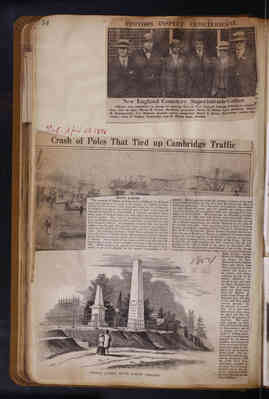
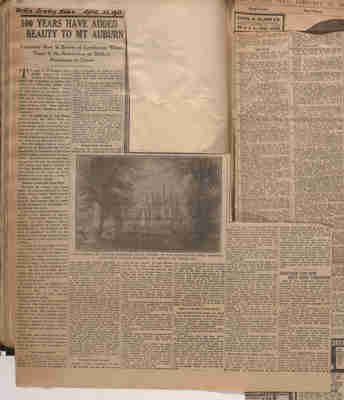
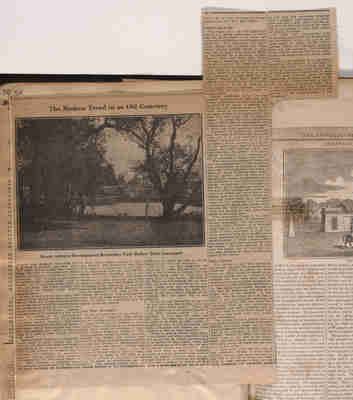
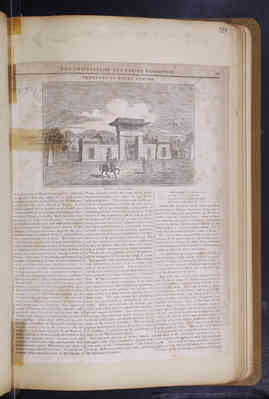
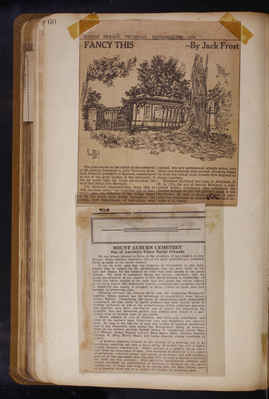
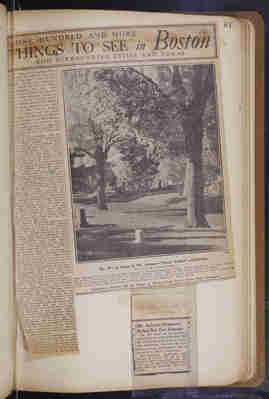
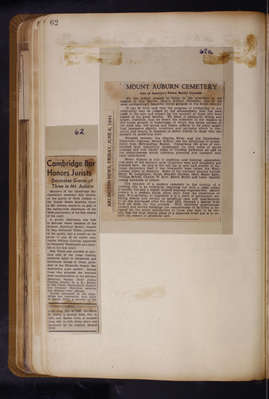
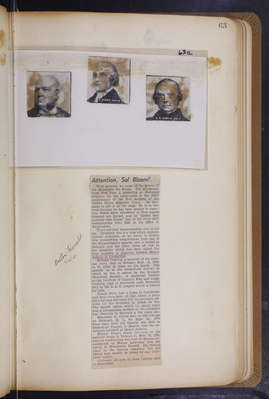
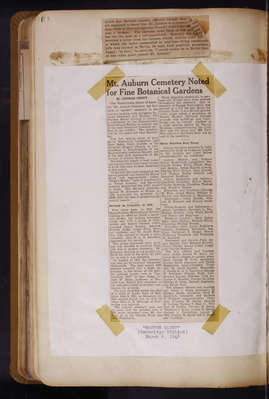
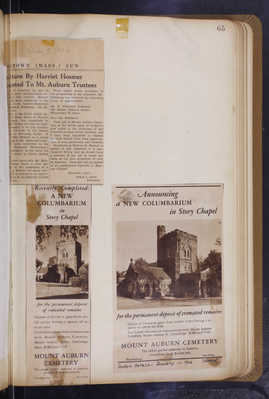

 Follow Us on Instagram
Follow Us on Instagram 